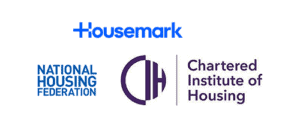Changes in Consumer Regulation: What This Means for the Social Housing Sector
The social housing sector is on the cusp of significant regulatory changes that promise to reshape the landscape for landlords and regulatory bodies alike. Starting April 1, 2024, the implementation of proactive Consumer Regulation will move the sector from a reactive approach to a more involved, preventative stance. This shift introduces new tests, programmed inspections, consumer gradings, and self-referral mechanisms, all designed to enhance tenant satisfaction and service quality.
For heads of procurement, heads of assets, and CEOs of social housing associations, understanding these changes is crucial for navigating the new regulatory environment. This blog post delves into the key aspects of these changes and offers actionable insights for compliance and preparation.
Meeting the Three Tests
One of the foundational aspects of the new Consumer Regulation framework is the introduction of three key tests set by the Regulator of Social Housing (RSH):
- Making a Meaningful Difference to Tenants: Landlords must evaluate their activities and services to ensure they genuinely impact tenants’ lives positively.
- Being Deliverable: Services must be practical and feasible within the operational capabilities of the housing association.
- Being Regulatable: Activities must comply with regulatory standards and be easily monitored by the RSH.
To meet these tests, landlords should:
- Assess Existing Processes: Regularly review and update current procedures to align with the new tests.
- Integrate Customer Voice: Ensure tenant feedback is an integral part of service development, starting from the procurement process.
- Future Services Planning: Consider how these tests will apply to future services and incorporate them into strategic planning.
Programmed Inspections
The shift towards programmed inspections signifies a move to a more structured and predictable regulatory approach. Key actions for landlords include:
- Create Inclusive Teams: Form inspection teams that include customers or their representatives and consumer experts.
- Tailor Inspection Approaches: Customise inspection methods to suit the specific needs of different communities.
- Transparent Communication: Maintain open lines of communication during inspections and provide clear feedback to customers afterward.
Understanding Consumer Gradings
The new consumer grading system introduces a C Rating, ranging from 1 to 4, which will assess compliance with the new standards. Actions for landlords include:
- Demonstrate Compliance: Show adherence to the new consumer standards as rigorously as to economic ones.
- Prepare for Governance Implications: Understand that consumer gradings may impact governance ratings and prepare for potential downgrades.
- Continuous Monitoring: Regularly monitor and report on compliance to avoid surprises during inspections.
Self-Referral Mechanisms
Landlords are now required to communicate promptly with the RSH regarding any material issues related to non-compliance with consumer standards. This may lead to an increase in self-referrals. Key considerations include:
- Establish Thresholds: Clearly define the threshold for self-referral to the RSH.
- Engage Proactively: Maintain an open dialogue with the RSH to manage issues before they escalate.
- Set Up Internal Processes: Develop robust internal processes to handle self-referrals efficiently.
Tenant Satisfaction Measures (TSMs)
While the full sector picture of TSMs will be available in the summer, landlords should prioritise gathering and analysing tenant satisfaction data internally. Steps to take include:
- Internal Data Collection: Start collecting and analysing tenant satisfaction data if not already doing so.
- Benchmarking: Compare performance with peers to identify areas for improvement.
- Knowledge Sharing: Collaborate with local peers and partners to share best practices and learnings.
Increased Engagement and Preparation
The new regulatory framework will necessitate increased interaction between landlords and the RSH. To prepare effectively:
- Proactive Preparation: Anticipate inspections and publication of gradings by ensuring readiness at all times.
- Ongoing Adjustments: Be prepared for continuous adjustments as the regulatory environment evolves.
- Engagement Strategy: Develop a strategy for regular engagement with the RSH to stay ahead of potential issues.
The New Code of Conduct
In addition to the regulatory changes, a new code of conduct will be introduced, similar to the one for economic standards. This code aims to provide examples of good practice to help registered providers comply with the new consumer standards. Key actions include:
- Familiarise with the Code: Understand the new code of conduct and integrate its guidelines into daily operations.
- Adopt Best Practices: Implement the examples of good practice provided in the code to ensure compliance.
- Train Staff: Ensure all relevant staff are trained on the new code of conduct and understand its implications.
Conclusion: A Necessary Evolution
While the changes in Consumer Regulation may not be seismic, they are essential steps toward ensuring that social landlords deliver the quality of service that tenants deserve. These changes reflect what social landlords should already be doing—making a meaningful difference in tenants’ lives, ensuring deliverable services, and maintaining high standards of accountability and transparency.
By proactively embracing these changes and preparing for the new regulatory environment, social housing associations can not only comply with the new standards but also set a benchmark for excellence in the sector.
Ready to navigate the new Consumer Regulation landscape? Connect with us today to ensure your organisation is prepared for the changes ahead by filling our form here.




